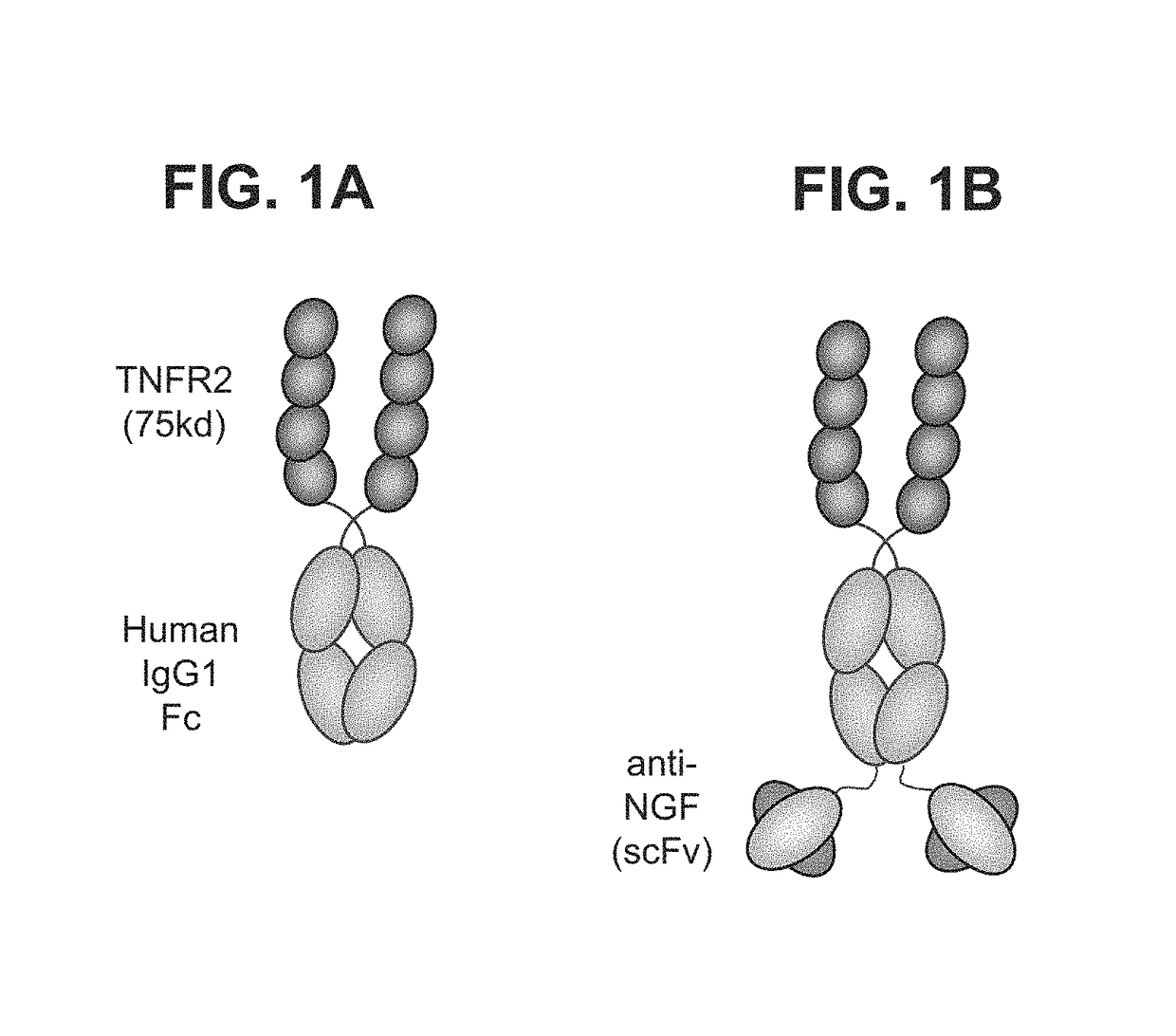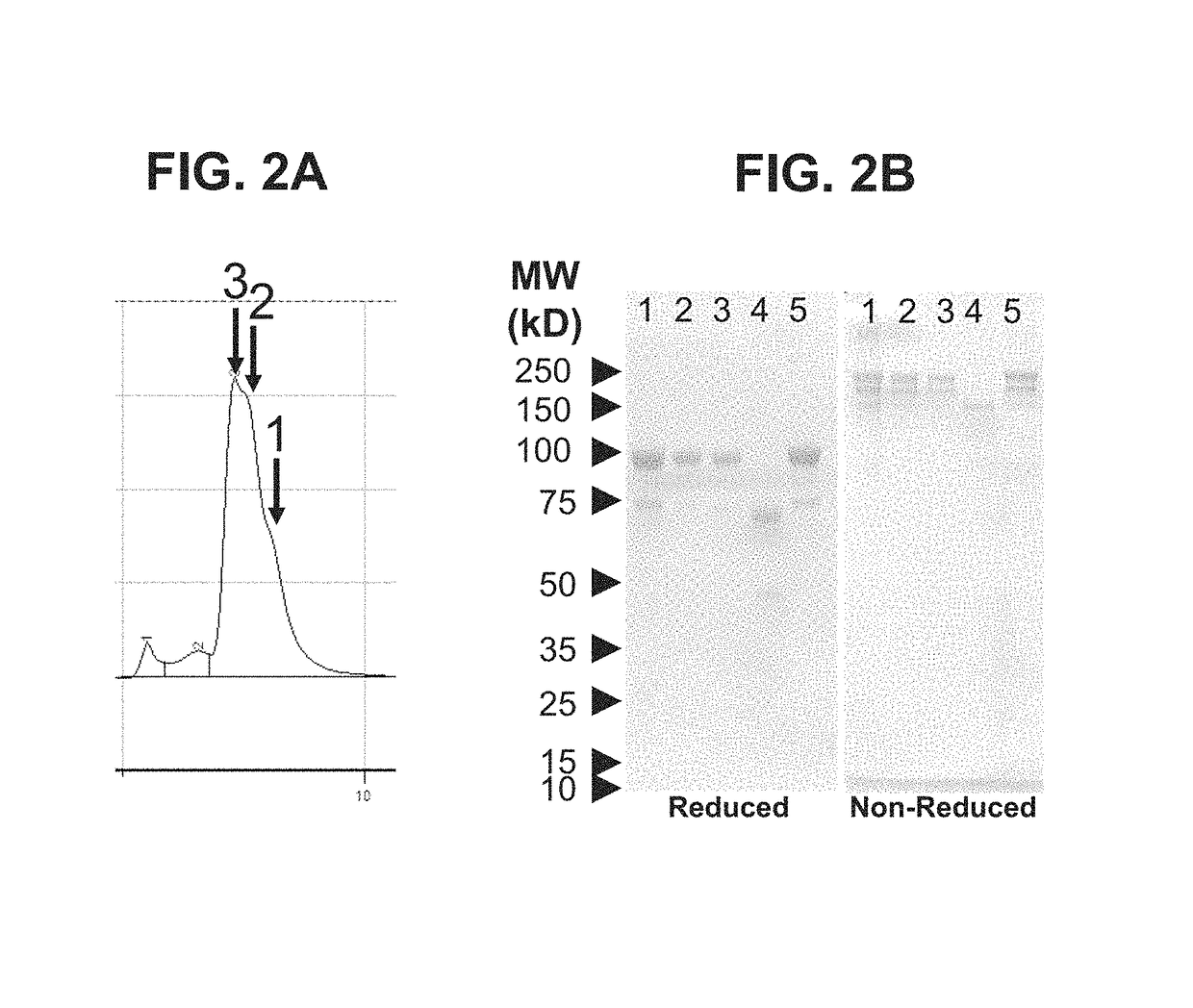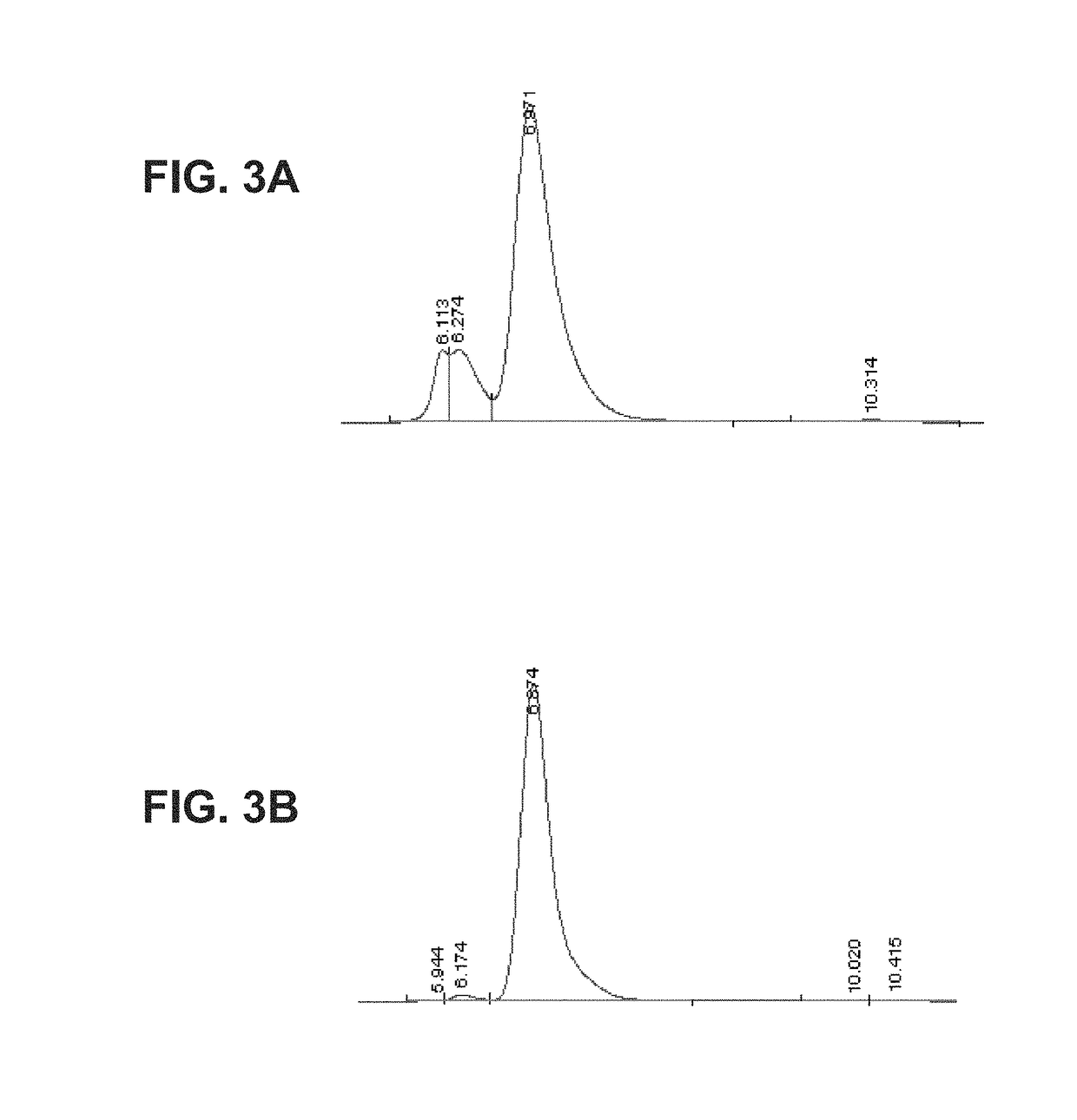Compounds and methods for treating pain
a technology of compound and pain, applied in the field of compound and pain treatment, can solve the problems of high burden on society, inability to eliminate pain, and loss of 50 million workdays a year, and achieve the effect of preventing, reducing, reducing, or eliminating pain in the subject and controlling pain in the subj
- Summary
- Abstract
- Description
- Claims
- Application Information
AI Technical Summary
Benefits of technology
Problems solved by technology
Method used
Image
Examples
example 1
Construction and Characterization of an Anti NGF scFv / TNFR2-Fc Multispecific Binding Molecule
[0188]A multifunctional molecule, specifically, a multispecific binding molecule comprising an anti NGF antibody domain and a TNFR2-Fc domain was produced as follows. The anti-NGF antibody scFv fragment was fused to the C-terminus of a TNFR2-Fc fusion protein (SEQ ID NO: 13) via the heavy chain CH3 domain, according to the Bs3Ab format described in Dimasi, N., et al., J Mol Biol. 393:672-92 (2009), and in PCT Publication No. WO 2013 / 070565. A diagram of the structure is shown in FIG. 1. DNA constructs encoding the TNFR2-Fc polypeptide and the multispecific binding molecule were synthesized by GeneArt (Invitrogen). For the multispecific binding molecule, an anti-NGF scFv comprising the VH (SEQ ID NO: 3) and VL (SEQ ID NO: 7) domains of MEDI-578 joined together via a 15 amino acid linker sequence (GGGGS)3 (SEQ ID NO: 15) was constructed. The N-terminus of the scFv was fused, via a 10-amino-aci...
example 2
Thermal Stability Analysis by Differential Scanning Calorimetry (DSC)
[0200]An automated MicroCal VP-Capillary DSC (GE Healthcare, USA) was used for the calorimetric measurements. Protein samples were tested at 1 mg / mL in 25 mM Histidine / Histidine-HCl buffer pH 6.0. The protein samples and buffer were subjected to a linear heat ramp from 25° C. to 100° C. at a rate of 95° C. per hour. The buffer was subtracted as a reference from the protein sample using Origin 7 software and the thermal transitions were determined.
[0201]The thermogram for TNFR2-Fc_VH#4 (FIG. 4) shows three distinct unfolding transitions with denaturation temperatures (Tm) of 64, 67, and 84° C. We deduced that the Tm of 64° C. corresponded with the denaturation of both the TNFR2 domain and the anti-NGF scFv domain, with the Tms of 67° C. and 84° C. being typical of the denaturation Tms for IgG1 CH2 and CH3 domains respectively (e.g. Dimasi, N., et al., J Mol Biol. 393:672-92 (2009), and PCT Publication No. WO 2013 / 07...
example 3
Confirmation of Antigen Binding to TNFR2-Fc_VH#4
A. Single and Dual Antigen Binding by ELISA
[0202]Nunc Maxisorp wells were coated at 4° C. overnight with 50 μl of TNFα (R&D Systems) diluted to 5 μg ml−1 in PBS (pH 7.4). The following day the coating solution was removed and the wells blocked with 150 μl of blocking buffer [3% skimmed milk-PBS] for 1 h at room temperature. The wells were rinsed three times in PBS, prior to the addition of 50 μl of a dilution series of TNFR2-Fc_VH#4 made in blocking buffer. After 1 h at room temperature, the wells were washed three times in PBS-Tween 20 (0.1% v / v; PBS-T). Fifty microliters of biotinylated NGF was then added to the wells and incubated for a further hour at room temperature, prior to washing as above and addition of 50 μl of streptavidin-HRP (1:100). After 1 hour at room temperature, the wells were washed with PBS-T, 50 μl of 3,3′,5,5′-tetramethylbenzidine substrate added and the color allowed to develop. The reaction was stopped by the ...
PUM
| Property | Measurement | Unit |
|---|---|---|
| temperature | aaaaa | aaaaa |
| temperature | aaaaa | aaaaa |
| rotational speed | aaaaa | aaaaa |
Abstract
Description
Claims
Application Information
 Login to View More
Login to View More - R&D
- Intellectual Property
- Life Sciences
- Materials
- Tech Scout
- Unparalleled Data Quality
- Higher Quality Content
- 60% Fewer Hallucinations
Browse by: Latest US Patents, China's latest patents, Technical Efficacy Thesaurus, Application Domain, Technology Topic, Popular Technical Reports.
© 2025 PatSnap. All rights reserved.Legal|Privacy policy|Modern Slavery Act Transparency Statement|Sitemap|About US| Contact US: help@patsnap.com



